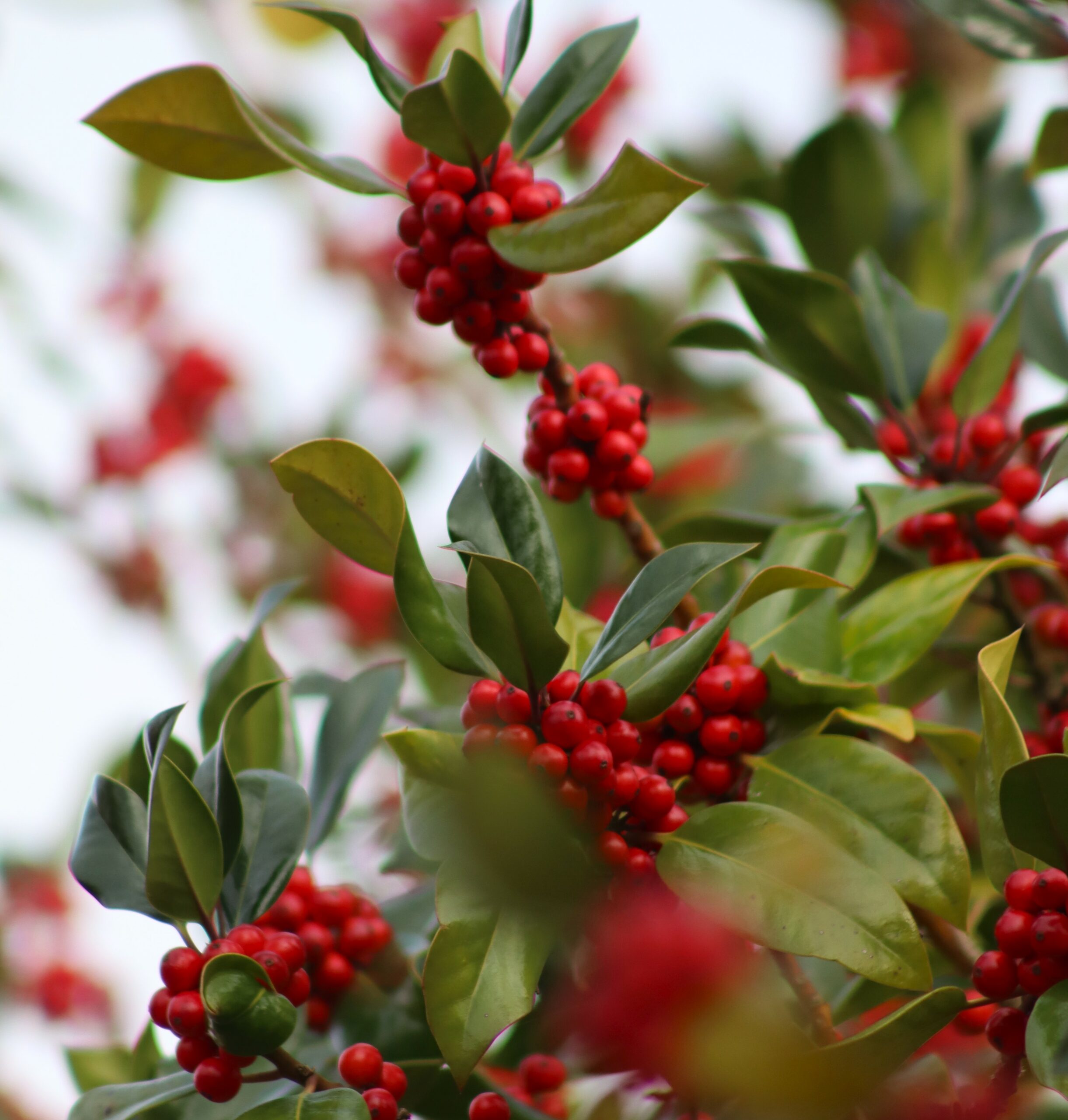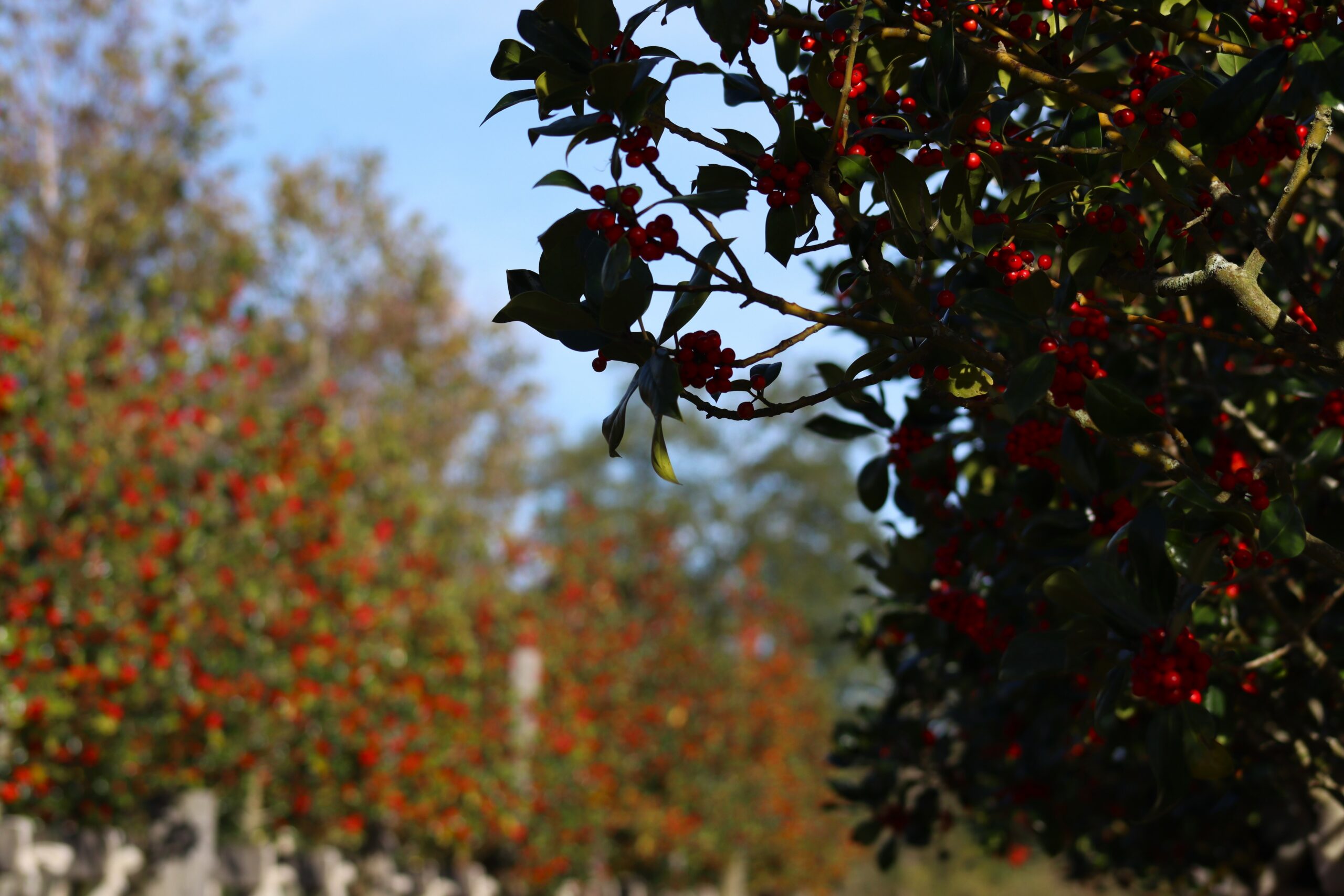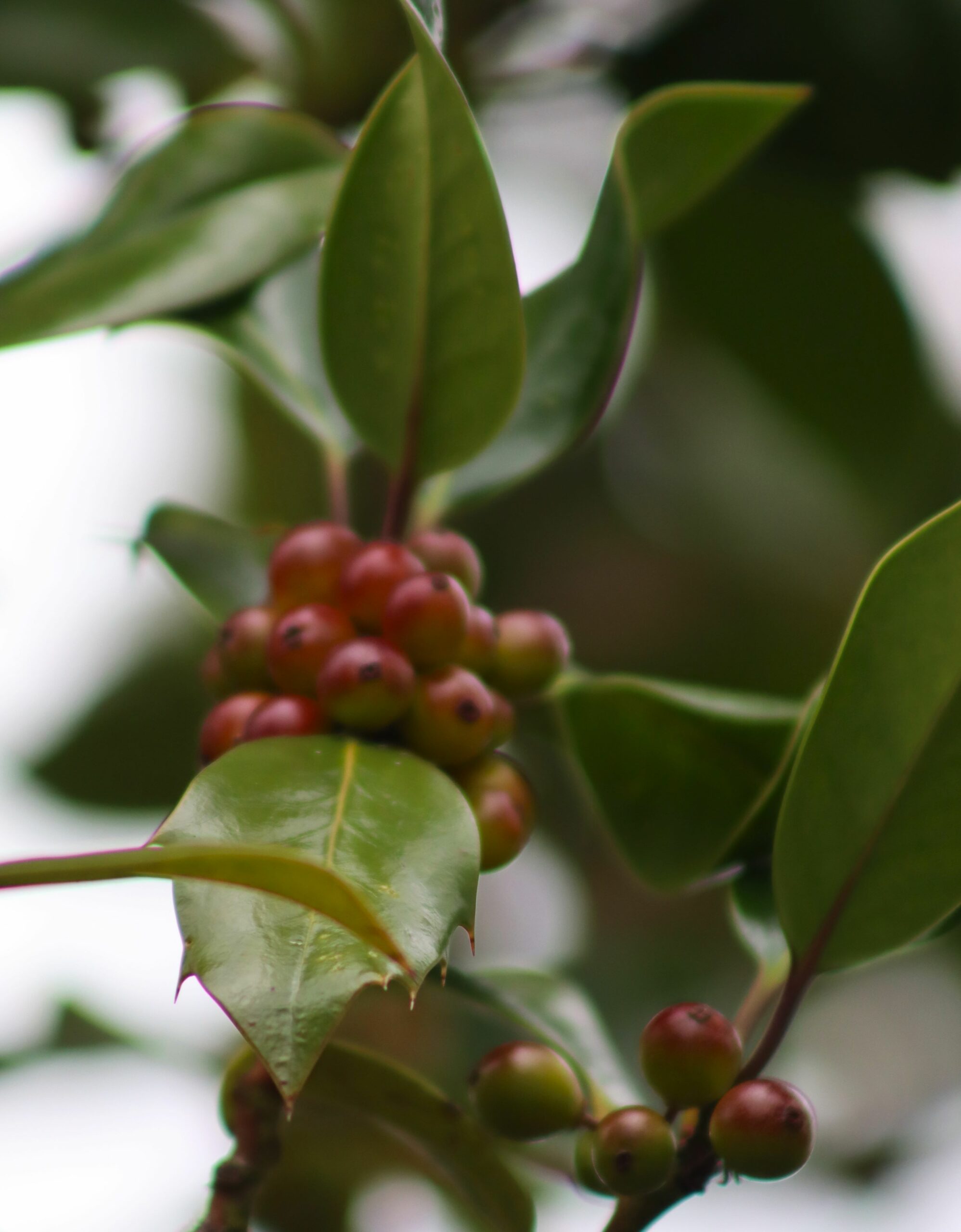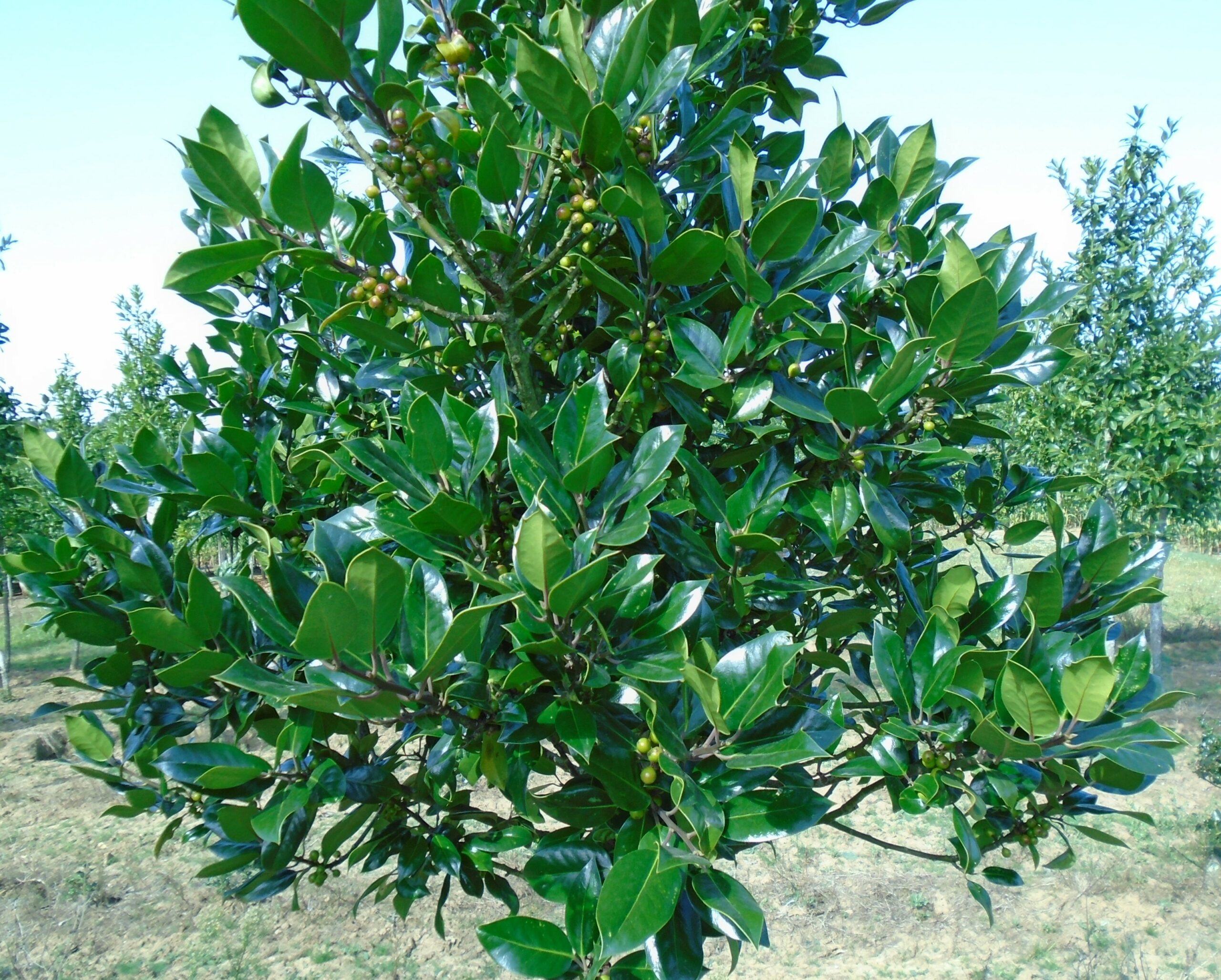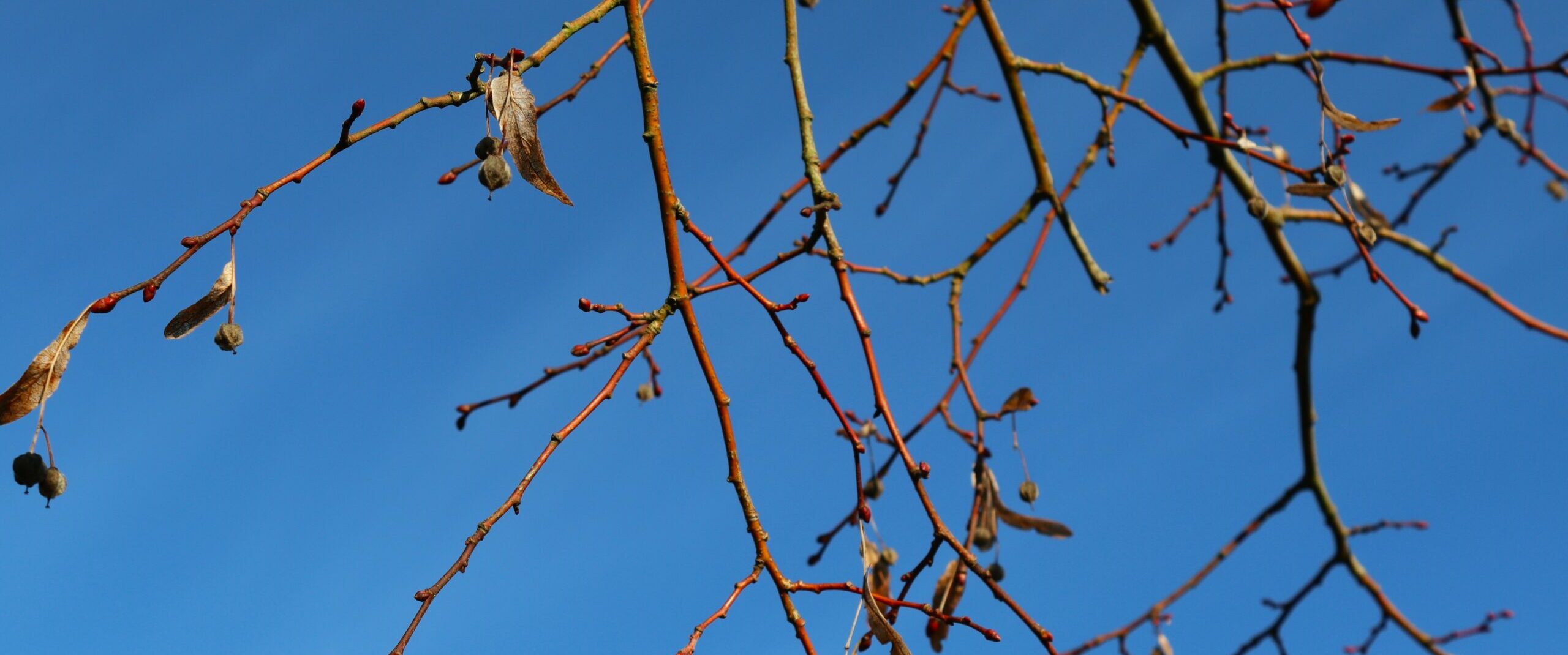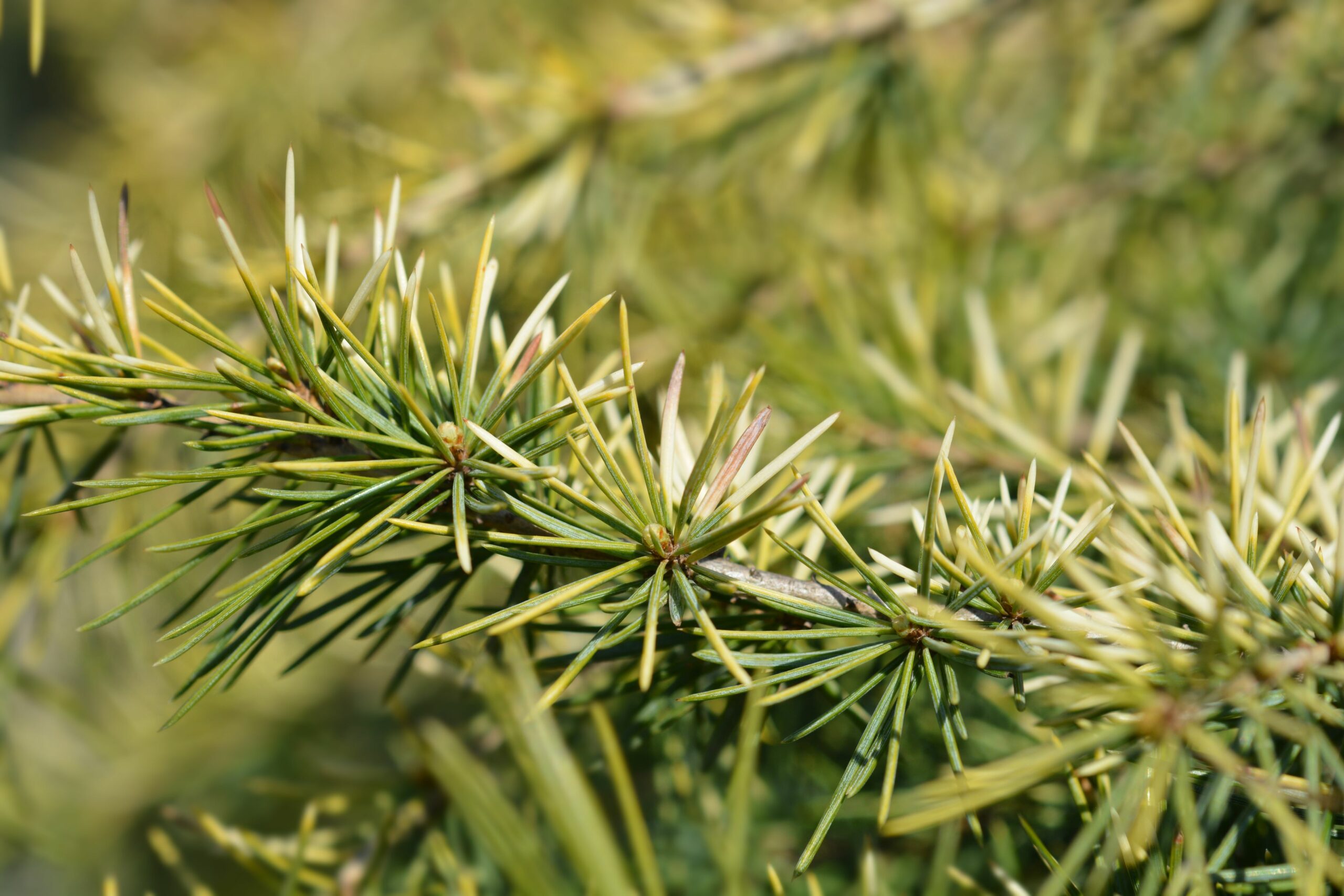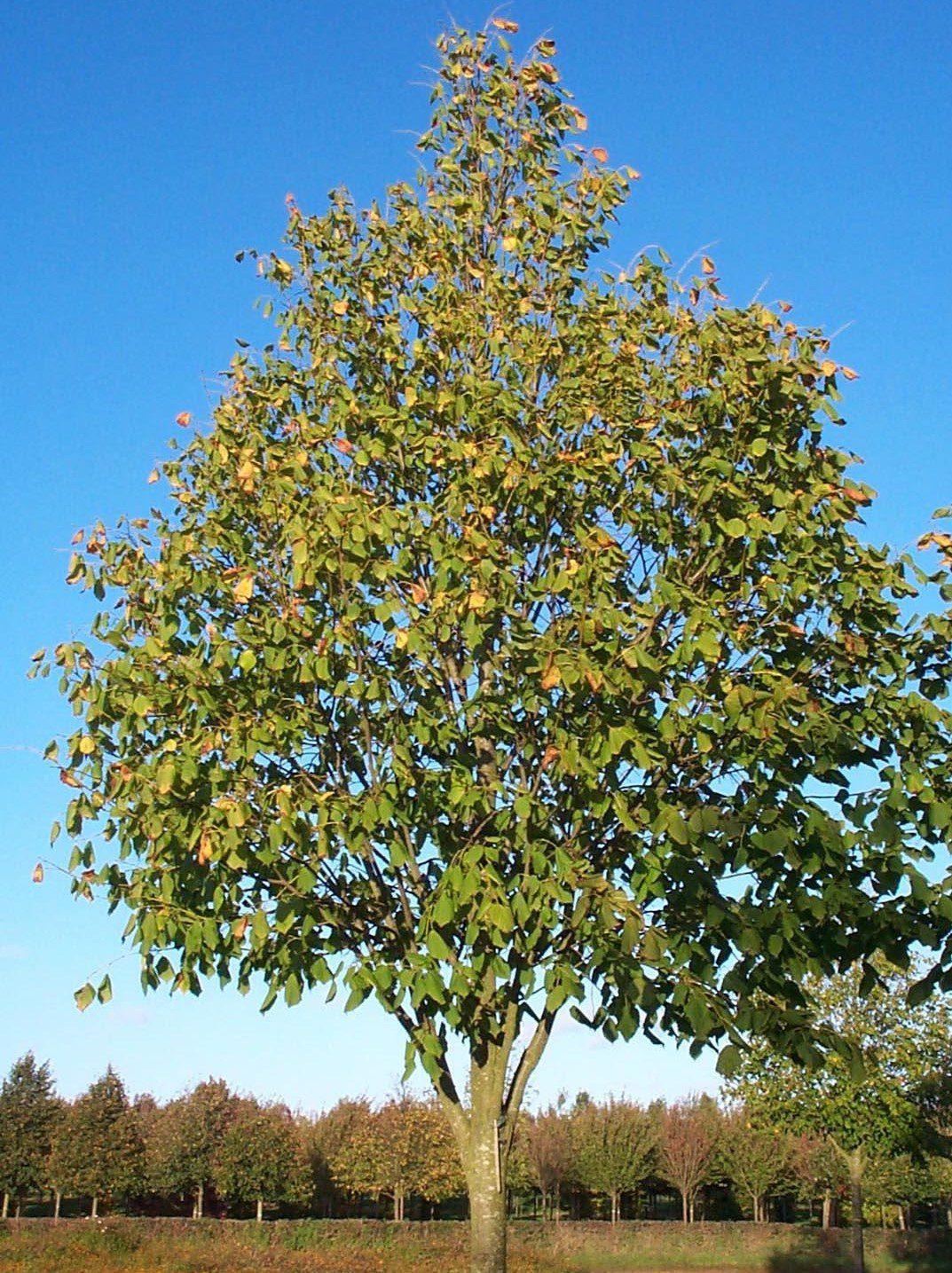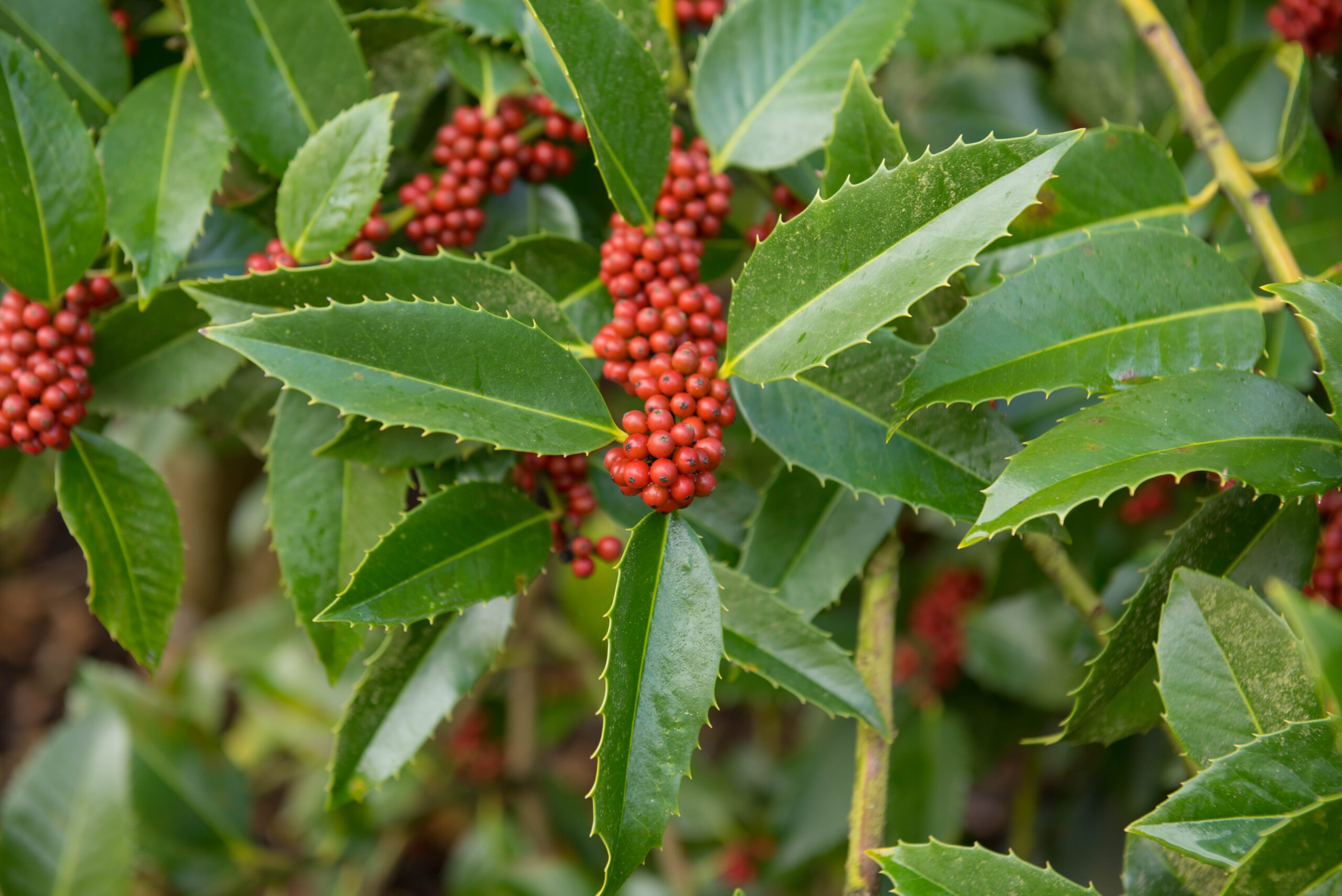Tree Information
Specialities
Tolerances
Wet Soil: Low
Dry Soil: Medium
Lime: Medium
Ilex x altaclerensis ‘James G. Esson’, commonly known as James G. Esson holly, is an attractive evergreen tree. An American-raised selection named in 1949 after James G. Esson, a renowned horticulturalist and plant breeder.
One of the prominent features of this holly is its glossy, dark green foliage. The leaves are soft rounded with a serrated margin and, unlike English holly, are almost spineless and without points. They create an elegant backdrop throughout the year and provide a visually appealing contrast against other plants. The evergreen nature of this holly ensures that it retains its foliage even during the winter months, adding colour and interest to the landscape.
In late spring, James G. Esson holly will produce small, inconspicuous white flowers that are followed by bright red berries. These are especially attractive to birds, making this cultivar a valuable addition to wildlife.
With its beautiful foliage, compact size and year-round interest, the Ilex x altaclerensis ‘James G. Esson’ is a versatile and visually appealing tree that can be used as a specimen plant, a hedge, or as a part of a mixed boarder. Its aesthetic appeal and adaptability make it a favoured choice for adding structure and colour to landscapes.
Visit our Useful Resources for in-depth guides
Discover guides to help you with specifying your trees, caring for your trees and understanding the weights and dimensions of trees.
Useful ResourcesSize
Small
6m high x 3m wide after 25 years
Environment
A fantastic costal tree. Will also make good hedging or screening.
Canopy
Dense, pyramidal growth habit.
Foliage
Dark green soft, rounded leaves which are almost spinless and without points.
Flowers
Small white flowers in late spring.
Fruit
Bright red berries.
Resilience
Thrives in well-drained soils and prefers a partially shaded to full sun location. It is adaptable to various soil types, including clay, loam, and sand, and can tolerate a range of pH levels.
Wildlife
Pollinators are attracted to white flowers. Birds are a fan of the red berries.
Available As:
Semi-Mature
Make an Enquiry
Enquire below and speak to one of our expert team. For trades only, for general public enquiries click here.
Find Trees For Your Project
View Our TreesSpeak to a Member of Our Sales Team
Make an Enquiry
